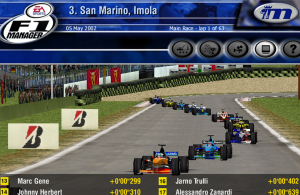Old F1 manager game features we want to see in 2022 edition
Spying rivals, trying to get away with illegal parts, surprise driver retirements, Rolls Royce F1 engines… The first generation of Formula 1 management games had some bizarre but fantastic features. Here are the ones we’d love to see inspiring the recently-announced F1 Manager 2022
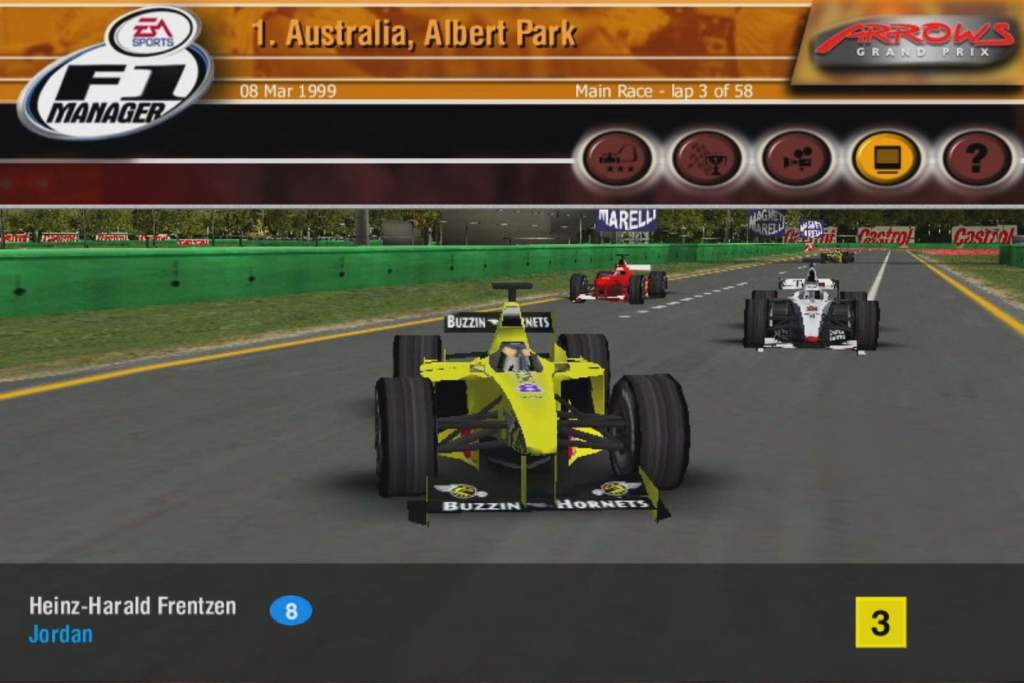
F1 Manager 2022, developed by Frontier and set for a release in the summer, is a throwback to before the turn of the millennium when licensed Formula 1 manager games existed alongside the more traditional F1 racing games.
Last to see the light of day was F1 Manager, published by EA Sports, and set in the 1999 season.
Before then there were a variety of titles from a number of different developers, although the titles that are most fondly remembered are those developed by MicroProse – specifically the two Grand Prix Manager games and then Grand Prix World.
MicroProse’s games are still looked back on with admiration by the few that remember their existence, and that’s partly because of how many aspects of running an F1 team those games gave consideration to.
Here are some of the key features in previous Formula 1 licensed manager games we would like to see return for F1 Manager 2022, however unlikely it may be that they will come back.
Extra drivers and part suppliers
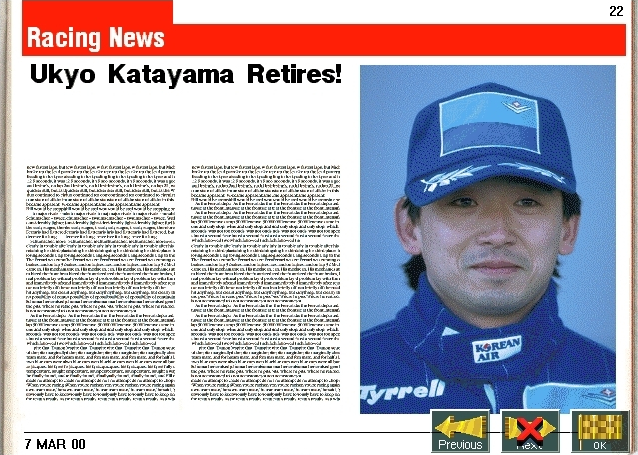
All of the manager games and the two most recent Codemasters F1 games have had more than just the original driver line-ups.
In the my team mode in F1 2020 and F1 2021 the full Formula 2 grid from the previous year has been included as well. EA’s F1 Manager got around it by including test drivers as well as some of the game’s developers as the really low-rated drivers in an attempt to increase the variety of potential line-ups.
Since the ratings of all the drivers can change overtime and both Grand Prix World and Grand Prix Manager 2 had drivers retiring from the sport, it was possible that a team would need to resort to one of the extra fictional drivers and they could possibly train them to a respectable skill level.
F1 Manager 2022 has already been confirmed to include the full Formula 2 and Formula 3 driver line-ups which is a more realistic and far more effective way to expand the driver roster.
Instead the older F1 management games had additional drivers including Mika Salo in F1 Manager despite him only appearing in the 1999 season as a replacement driver for the injured Ricardo Zonta and then later Michael Schumacher.
Also Grand Prix Manager 2 had Taki Inoue in the experienced driver section despite him not ending up on the real 1996 grid as his deal with Minardi collapsed pre-season.
Additionally extra manufacturers could come into F1 in these games despite lacking real-life presence. In Grand Prix World it’s Esso that can randomly join as a fuel supplier, Michelin for tyres and Toyota as an engine manufacturer.
In reality Michelin didn’t produce F1 tyres again until 2001 and Toyota didn’t enter F1 at all until 2002 which was four years after the game’s setting of 1998.
One supplier joining could boot out another, so Toyota joining could quite easily cause Mercedes to leave the very next year. Equally you could simply have an additional supplier to choose from which would turn the tyre war into a three-way fight.
Grand Prix Manager 2 has an even greater selection of contractors as you need to sign a deal with a spare parts provider and a security contractor. Those are on top of fuel and tyre providers, although all of those are fictional.
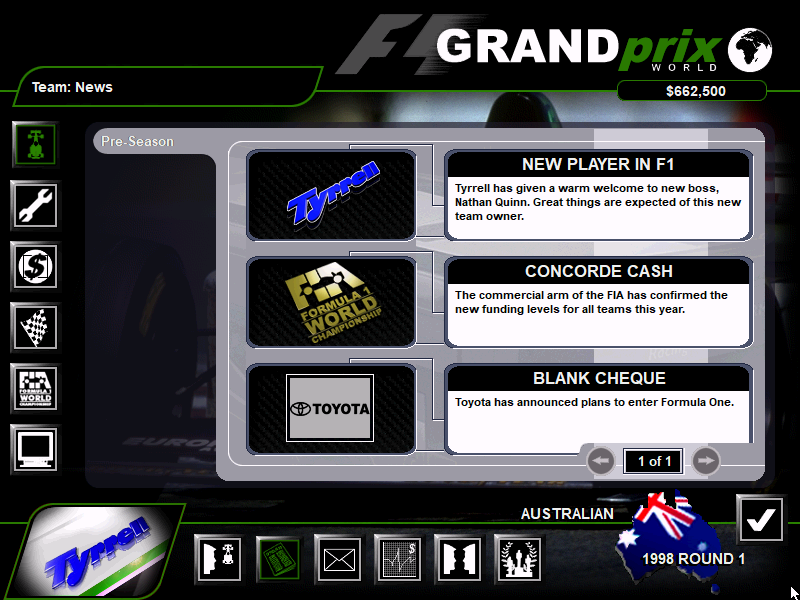
The engine manufacturers in the game are all real firms and there are 16 in total which is more than the maximum number of teams. Along with all the firms that produced engines for the 1996 F1 season, there’s the slightly leftfield choices of Honda (separate to Mugen-Honda) and BMW, who were both involved in F1 before and would go on to be again in the future.
Then there’s Lamborghini, last seen with the unsuccessful Modena team in 1991, as a fall-back option. Most bizarre is Rolls Royce, which can supply engines in the game despite never having a real F1 presence.
Rule and circuit changes
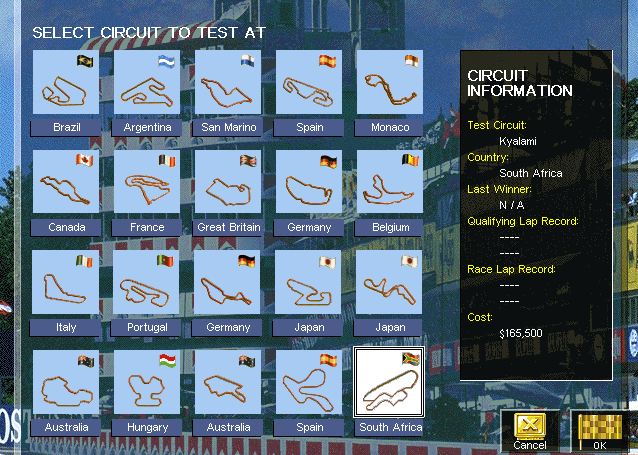
Given the ever changing world of Formula 1 it would be unrealistic if the rule set and calendar stayed the same year after year for an entire career playthrough. Despite that not every management game had season on season changes but some did.
The games that did it best by far were both Grand Prix Manager titles which would have a varying amount of rule changes made at the end of each season and occasionally there would be a snap rule change part way through.
Anything from the quality of certain parts of the car, the different driver aids that are allowed or the weight limit for the cars can all change from one year to the next.
Those changes could have a profound effect on the pecking order, especially if a new driver aid gets legalised that a team had already been developing in anticipation of it being made legal. So until everyone else catches up the teams that have, for example, ABS or active suspension could be multiple seconds per lap clear of the rest of the pack.
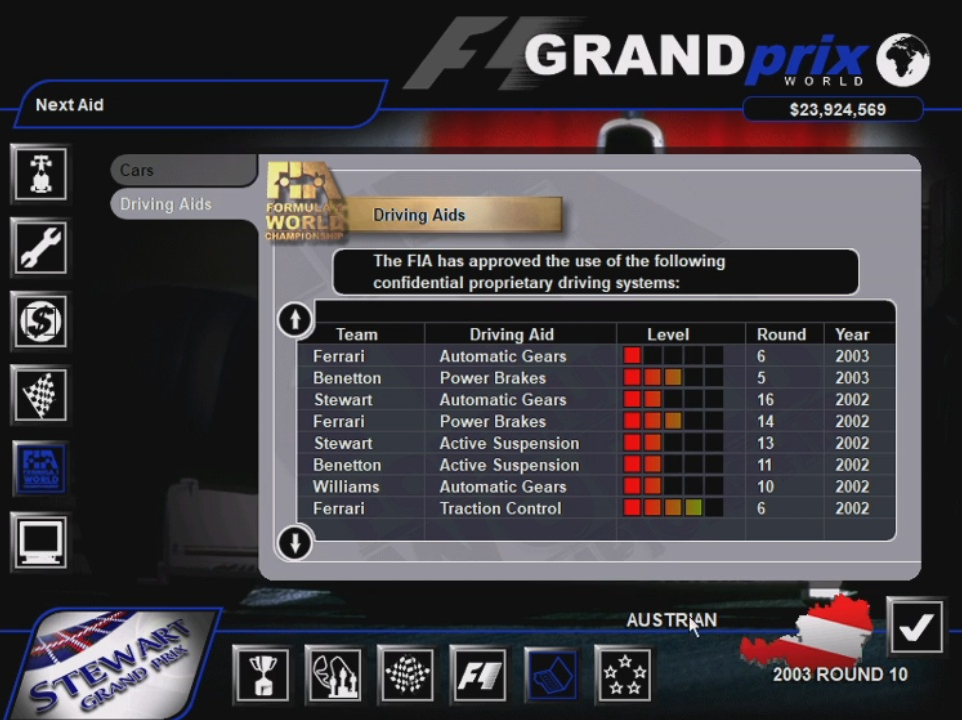
The car weight limit is often the most frustrating change since once you exceed it by too much you start to haemorrhage lap time. If the weight limit goes down then you’ll need to work out which parts it is best to downgrade for lighter, albeit lower quality, replacements.
Also a reduction in the weight limit could favour teams that use smaller engines, such as the Mercedes or the incredibly lightweight Nissan V8. Conversely an increase in engine weight would help those who produce bigger block engines as weight saving becomes less of a priority.
Since the suppliers can also improve their engines over time, the rule set combined with significant improvements from certain suppliers could out of nowhere make Lamborghini or Ilmor one of the better engine suppliers to partner up with.
Grand Prix Manager and its sequel also make changes to the roster of tracks that are raced around from one season to the next. In the first title there are the 17 circuits that made up the 1995 F1 season but Jerez, Kyalami and even an oval track set in Baltimore, USA.
In the second game Baltimore is gone but Jerez and Kyalami remain as testing venues and potential replacements for one of the other circuits. Aida and Adelaide, which were dropped in the transition from the 1995 to 1996 seasons, return for the second game as potential circuits which ensures 20 tracks are available even though each season is always 16 races long.
Breaking the rules

Every rule that’s set is a rule that can be broken and there are even a number of unwritten rules that you can go against.
The reason there are security contractors in the Grand Prix Manager games is because teams can spy on each other and view the parts their rivals are running on their cars, any driver aids they have and even their car’s set-up.
Obviously the better the security firm a team has, the less likely you are to be able to see that information. Beyond that you can also attempt to steal parts from teams or offer to do a deal with that team.
Often that will require a swap in intelligence so they’ll give you the plans for that part as long as you give them information about a part on your car that’s better than theirs. If you’re a backmarker team with nothing of quality on your car, then they’ll sell that part to you for a fee.
But the process of building up the best car possible isn’t that easy since the FIA can impose rule changes. That can be anything from restricting parts beyond a certain performance threshold or adjusting the weight limit which could impact how many high quality and therefore heavy parts you can legally have.
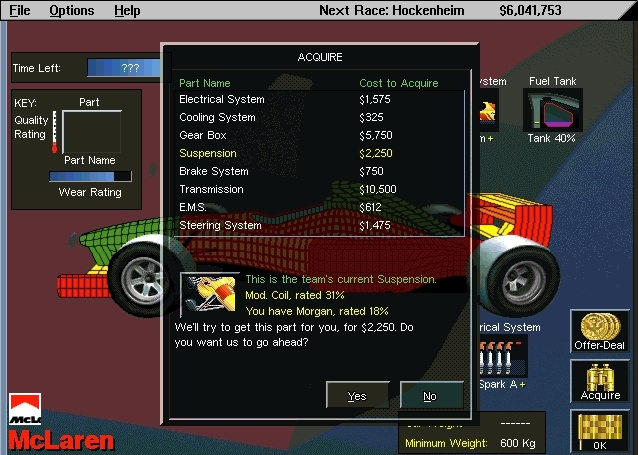
Equally a driver aid that you’ve been working on could be banned overnight and a new system made legal in its place. Often you’ll be able to spot who’s ahead of the curve with developing that newly legal driver aid as they’ll start the season as much as a few seconds per lap quicker than the competition.
A team that emerges from a rule change as the clear pacesetter will naturally become a target for spies and part thefts, creating a never ending cycle.
In the two Grand Prix Manager games and Grand Prix World you can choose to enter a race with illegal parts and hope that you don’t get caught.
In the latter game though teams all spy on each other during a race weekend and if they find a driver aid then they will have the option to either try to copy that part for themselves or report you to the FIA.
Bankruptcies and financial management
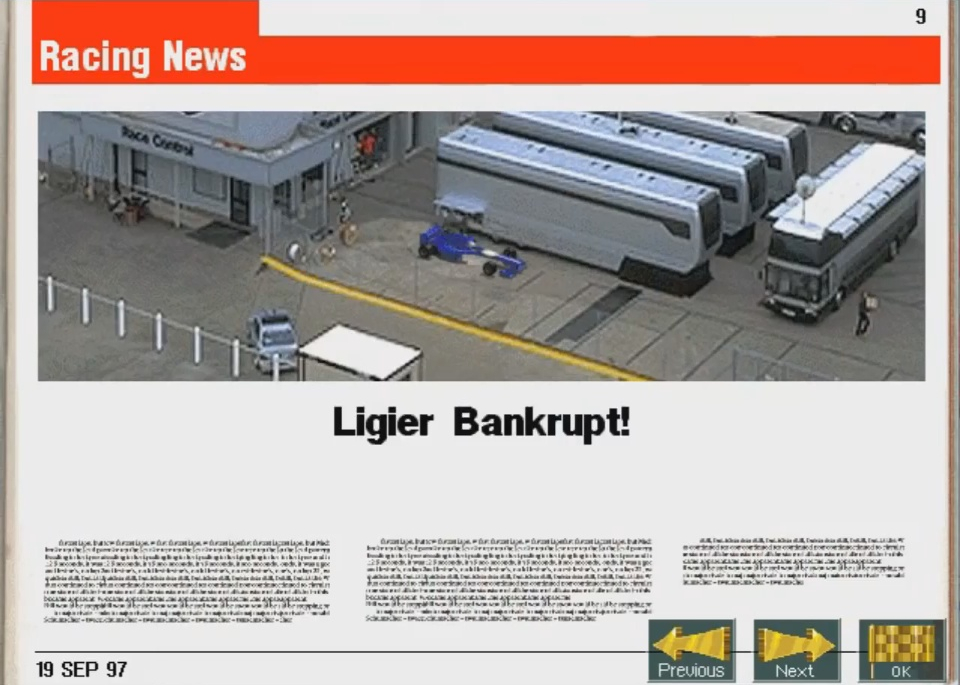
Recent Codemasters games have had the front of financial management in the my team career mode since you have to pay for the supply of engines, your team-mate’s salary as well as for the upkeep and upgrading of team facilities.
The reality though is that it is extremely easy to turn a profit and after a few seasons money becomes almost immaterial anyway.
Any decent management game has to have a well balanced economy and consequences for making poor decisions or doing a bad job as a manager.
The worst case scenario is a team going bankrupt and no longer existing in F1, something which can happen to the AI teams as well as yourself in the Grand Prix Manager titles.
If you’re a big team that was successful in the past and is still competing up at the front, then you’ll be much more likely to get favourable engine deals. That’s especially true if you have a highly rated commercial manager.
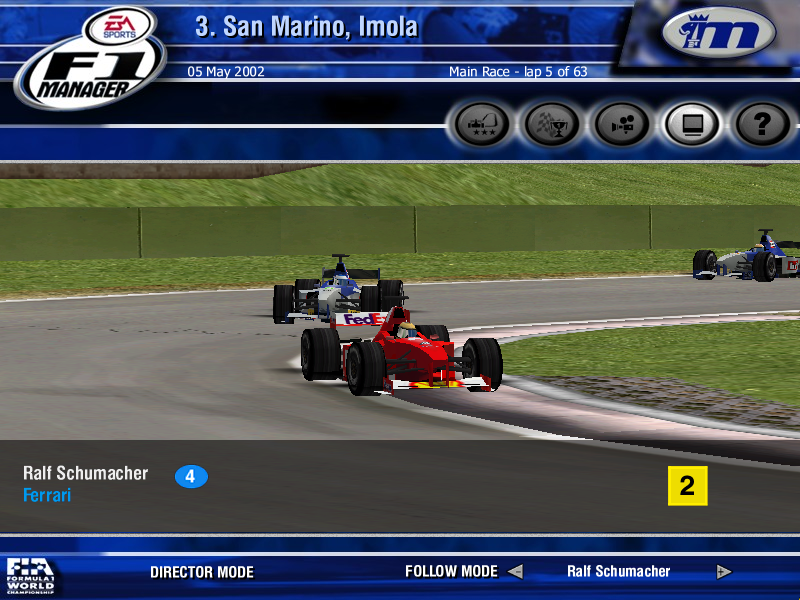
In Grand Prix World you can be a customer team meaning you have to pay for your supplied parts, namely the engines, fuel and tyres. One up from that is a partner deal where you get your supplied parts for free and some more perks such as limited R&D. Then the best is a works deal where the supplier pays you and gives you full R&D to improve your parts yourself.
In both Grand Prix World and both Grand Prix Managers the top suppliers will refuse to do a deal with you and even the best sponsors won’t sign for your team if it’s doing badly and has done in the past.
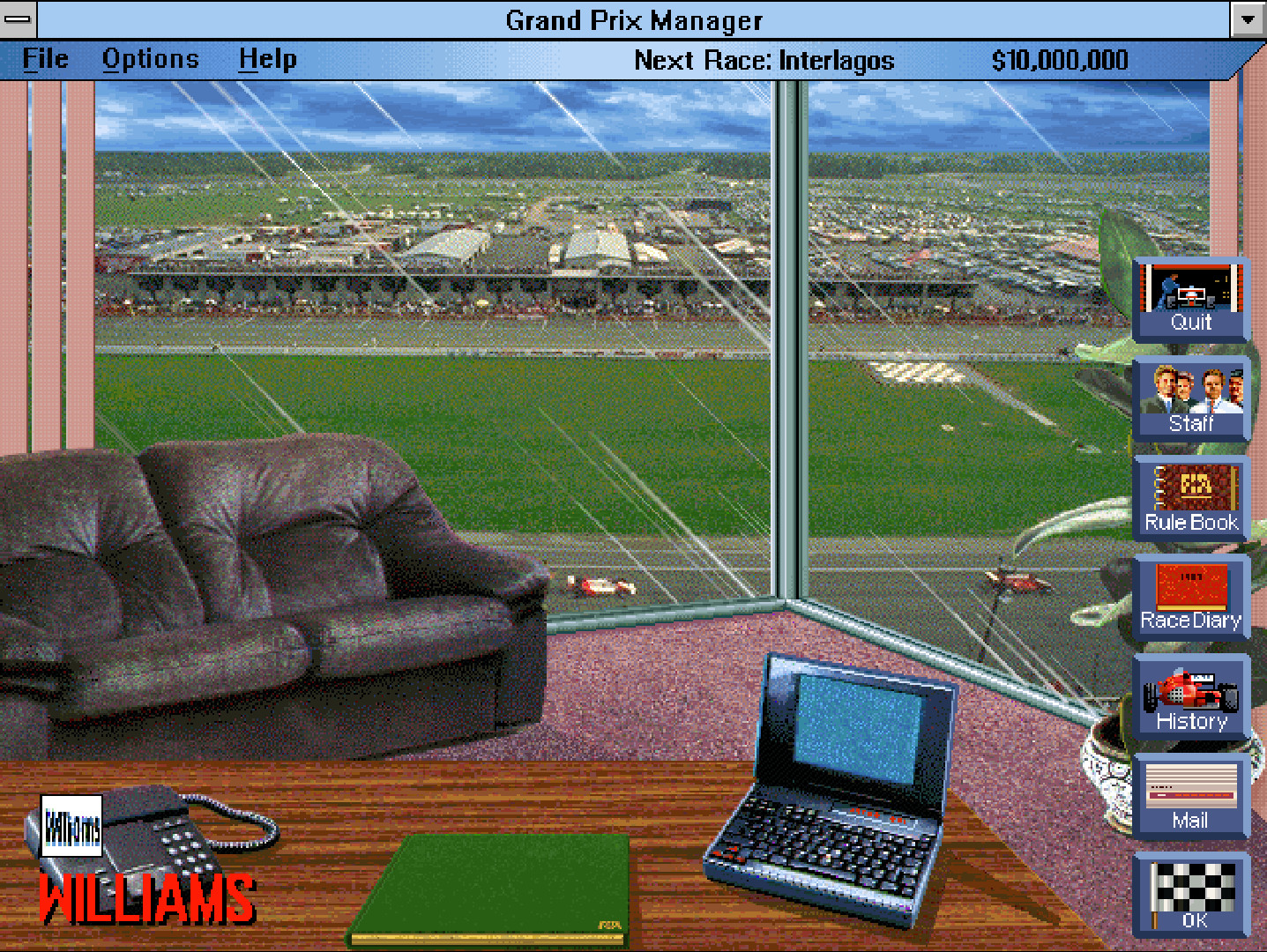
That naturally creates a virtuous cycle for the successful teams while also meaning that the backmarkers have less income and more expenses.
If you’re running really low on funds and losing money every race then the simple fact that the final races of the season take place in Asia, and therefore require more money in travel expenses, could be the final nail in the coffin of your managerial career.
Backmarker teams naturally rely on pay drivers and when you’re managing one of those teams it is easy to see why. Pedro Diniz is one of the lesser rated drivers in Grand Prix World but brings with him nearly $10million in funds. That makes him one of the most useful and desirable drivers in the game.
Driver management
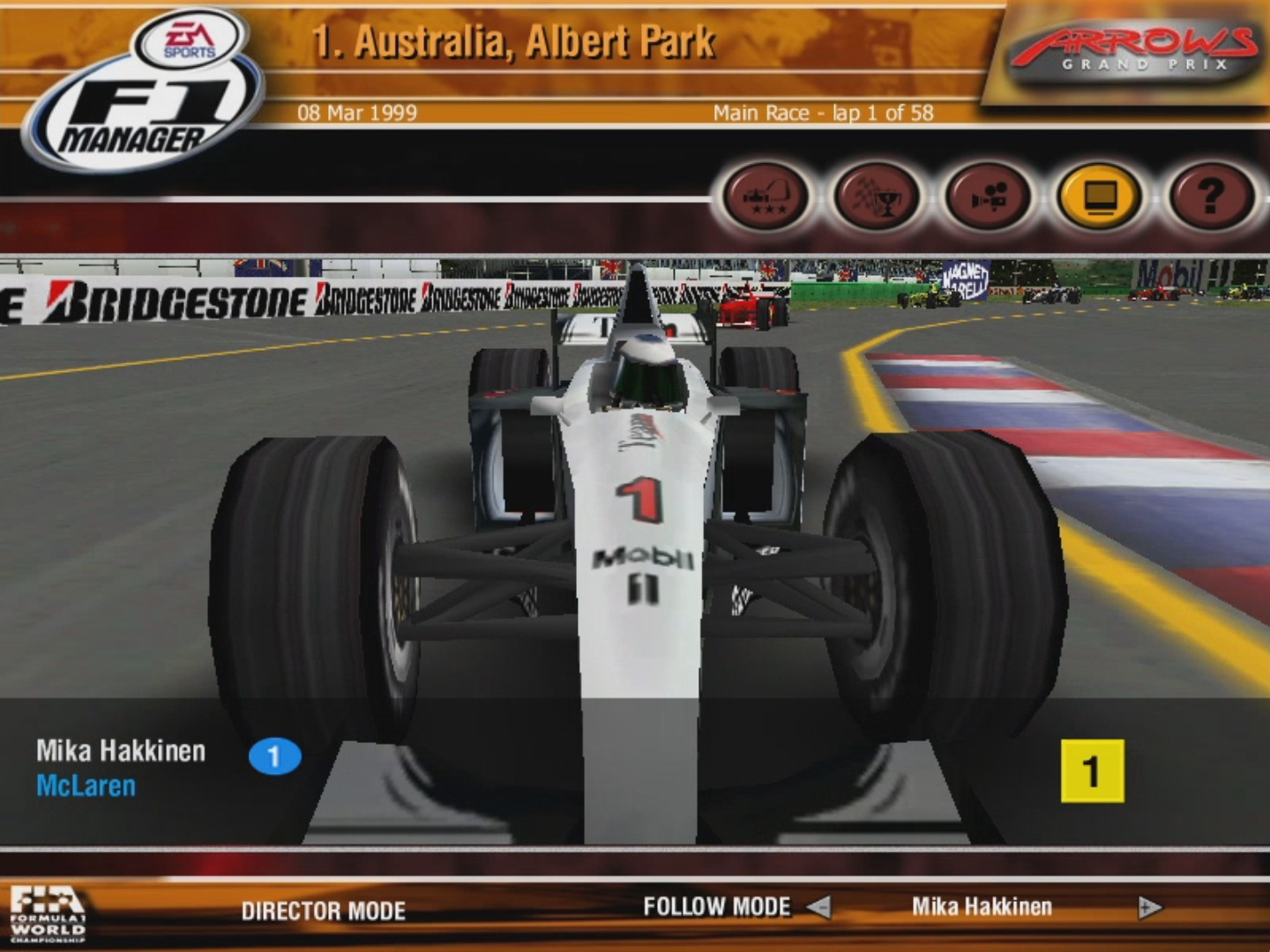
The term driver management is a deliberately vague one because there’s a lot of factors to consider when signing drivers beyond simply how quick they are. Equally there are potential decisions that need to be made when they are in your team and how long you keep them on for.
Aside from how much they cost, or even if they will bring in money for the team, the decision making process on who to sign can be more complicated.
For example in F1 Manager none of the four world champions who were racing in 1999 – Michael Schumacher, Mika Hakkinnen, Jacques Villeneuve and Damon Hill – will agree to be team-mates to each other. In fairness that is good for balancing reasons since a Schumacher and Hakkinen driver pairing would be near unbeatable.
In the other management games though it gets rather more complicated than that. In Grand Prix Manager 2 the best engine suppliers are Renault, Mercedes and Ferrari. However they will only give you engines if you have a driver of the same nationality as them. That means having a French, German or Italian driver is almost a prerequisite to build a race winning team, even if that person is only your test driver.
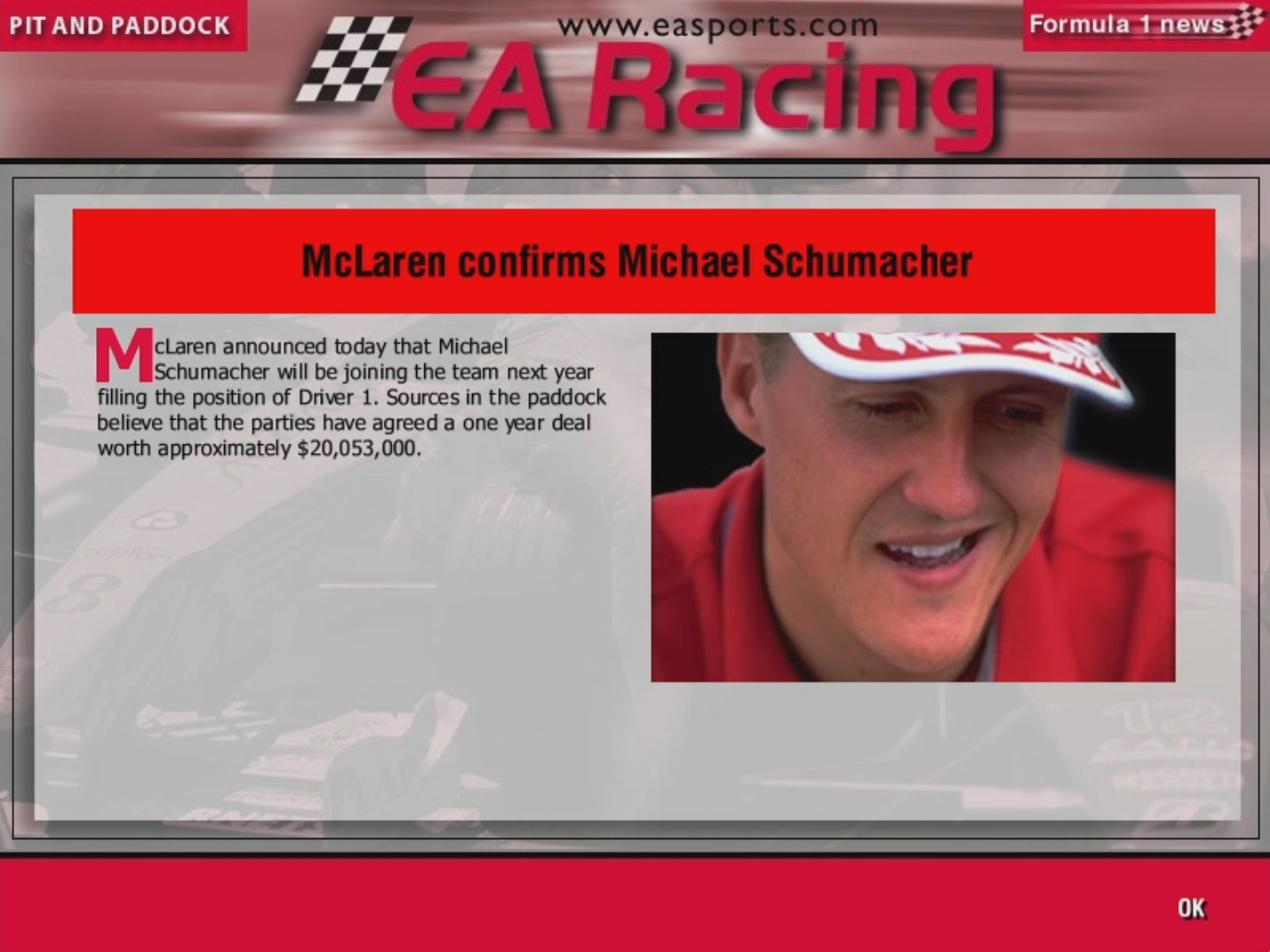
Whether or not one driver has preferential treatment is flagged up from the start in Grand Prix World since drivers sign their contracts specifically agreeing to either number two, equal or driver number one status. The issue is that it is set in stone which doesn’t leave any flexibility should your intentions change mid-contract.
So if both of your drivers are under the impression that they’ll be treated equally but then you start to enforce team orders, the driver who’s not getting the favourable treatment will then decrease in morale and refuse to take part in testing. That can slow down your R&D and how quickly you’re able to improve your car.
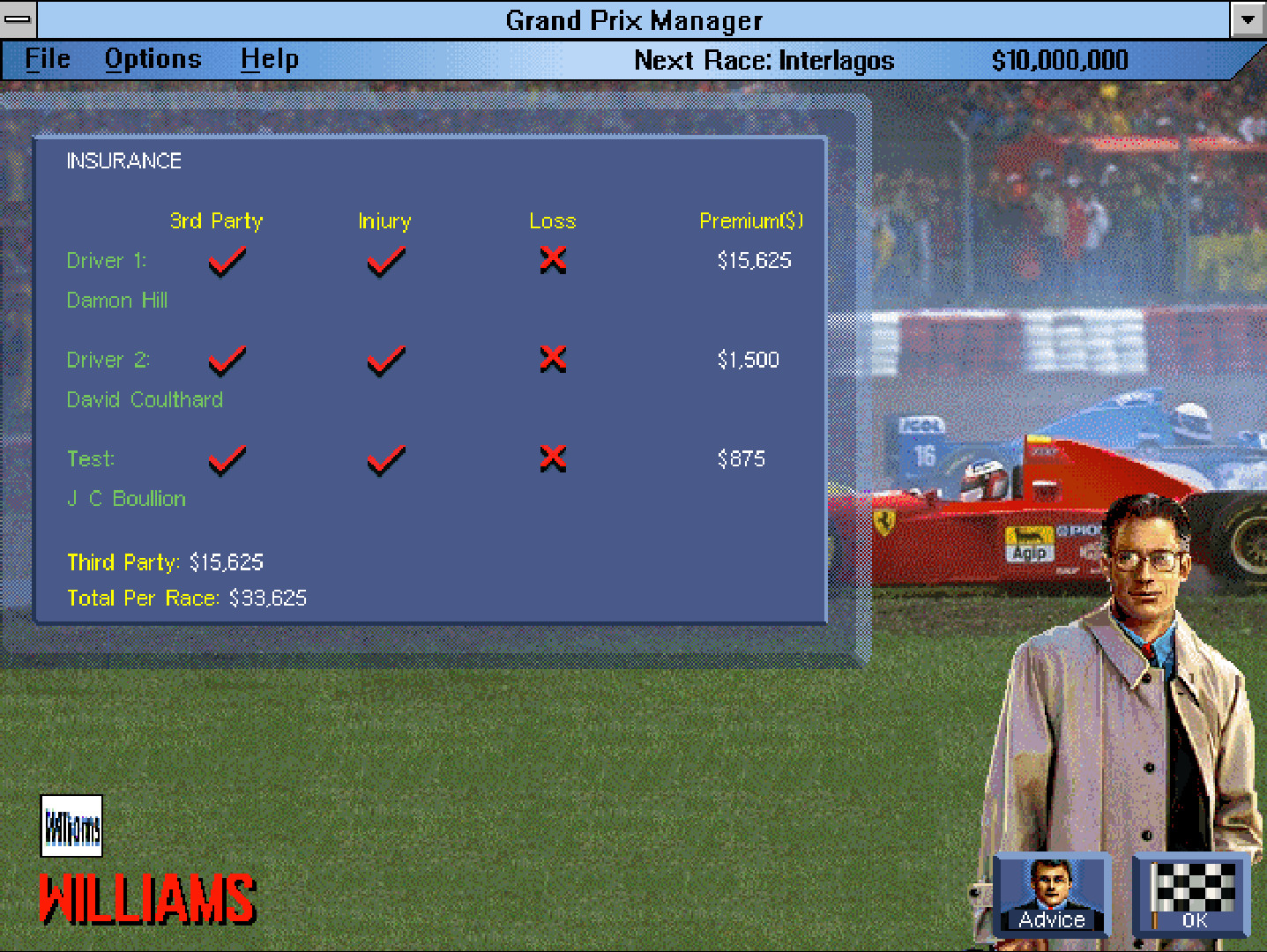
Sometimes you’ll get thrown a curve ball though which can undo a lot of your extensive planning. Not only can drivers sign for other teams and retire from F1 entirely, but in the Grand Prix Manager games they can also randomly miss races due to illness or injury. The games even go so far as to offer differing levels of insurance policies you can take out on your drivers in case something does happen to them.
All of that means if you’ve saved money on your test driver or have someone signed purely on nationality rather than ability, then it will be a tough few races until your main race driver is able to return.
